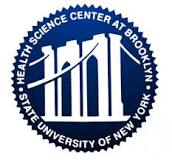Surveillance Monitoring for ART Toxicities Study in HIV Uninfected Children Born to HIV Infected Women
| Status: | Recruiting |
|---|---|
| Conditions: | Infectious Disease |
| Therapuetic Areas: | Immunology / Infectious Diseases |
| Healthy: | No |
| Age Range: | Any |
| Updated: | 9/12/2018 |
| Start Date: | March 2007 |
| End Date: | July 2020 |
| Contact: | Liz Salomon, EdM |
| Email: | lsalomon@hsph.harvard.edu |
| Phone: | 617-432-6762 |
SMARTT will estimate the incidence of conditions and diagnoses potentially related to in
utero exposure to antiretroviral therapy and/or exposure in the first two months of life
among children born of HIV-infected mothers.
utero exposure to antiretroviral therapy and/or exposure in the first two months of life
among children born of HIV-infected mothers.
Many antiretroviral therapy (ART) medications given to a pregnant woman cross the placenta
and can be detected in the amniotic fluid and cord blood resulting in substantial fetal
exposure. Therefore, there is concern about toxicity of the drugs in the fetus and infant. It
is noteworthy that none of the currently approved ART medications for the prevention of
maternal to fetal transmission of HIV are in Food and Drug Administration (FDA) Pregnancy
Category A (no fetal risk ascertained in adequately controlled human studies). Thus, there is
continued need to examine the toxicity of ART in HIV transmission prevention for the
short-term toxicity of newer agents and combinations as well as the unanswered questions of
longer term toxicity and subtle adverse effects.
The study will use a registry approach to conduct active surveillance among children < 12
years of age at enrollment. Occurrences of abnormalities from ART exposure in utero and/or in
the first two months of life will be sought in multiple domains, including metabolic, growth,
cardiac, neurologic, neurodevelopmental, behavior, language, and hearing. Clinical and
laboratory data will be examined for abnormalities through a hierarchy of evaluations:
adverse events (AE) will be identified → selected AEs will trigger predefined additional
evaluations → significant observations will be defined as cases → a pattern of significant
study-wide cases will be defined as signals. The incidence of these events of interest will
be monitored over time and by ART regimen, and compared with historical data that may be
suggestive of a signal. Some signals may be testable using existing and/or previously
collected data, while other signals may indicate the need for additional hypothesis-driven
studies outside of SMARTT.
The objectives of SMARTT are:
1. To estimate the occurrence of potential ART-related toxicities through an ongoing
surveillance system among HIV-uninfected children born to mothers with HIV infection
with and without exposure to ART in utero and/or in the first two months of life and
compare the occurrences of these outcomes with other sources of data as well as by ART
exposures; and
2. To actively encourage hypothesis-driven studies to confirm that the signals are due to
ART exposure in utero and/or in the first two months of life. Note that the full design
and execution of these studies may be beyond the scope of the SMARTT study but will be
facilitated by SMARTT.
The specific aims of SMARTT are:
1. To create a Static Surveillance Cohort to extend domain-specific data collection in
children either 1) previously enrolled in any of the approved studies for enrollment
into SMARTT; 2) previously enrolled in another pediatric HIV/AIDS cohort study with
SMARTT Protocol Chair approval, or 3) not previously enrolled in an approved study but
with equivalent data available in the medical record;
2. To create a Dynamic Surveillance Cohort to examine domain-specific data of children
newly exposed to ART in utero and/or in the first two months of life;
3. To create a Young Adult Cohort to study long-term outcomes in SMARTT participants
formerly enrolled in the Static and Dynamic cohorts.
4. To identify a set of "triggers" for each domain that define a "signal" of possible ART
toxicity and compare the occurrence of these signals with previously collected data and
by ART exposure; and
5. To encourage and facilitate the development of hypothesis-driven studies to evaluate
whether a "signal" is the result of ART exposure in utero and/or in the first two months
of life.
and can be detected in the amniotic fluid and cord blood resulting in substantial fetal
exposure. Therefore, there is concern about toxicity of the drugs in the fetus and infant. It
is noteworthy that none of the currently approved ART medications for the prevention of
maternal to fetal transmission of HIV are in Food and Drug Administration (FDA) Pregnancy
Category A (no fetal risk ascertained in adequately controlled human studies). Thus, there is
continued need to examine the toxicity of ART in HIV transmission prevention for the
short-term toxicity of newer agents and combinations as well as the unanswered questions of
longer term toxicity and subtle adverse effects.
The study will use a registry approach to conduct active surveillance among children < 12
years of age at enrollment. Occurrences of abnormalities from ART exposure in utero and/or in
the first two months of life will be sought in multiple domains, including metabolic, growth,
cardiac, neurologic, neurodevelopmental, behavior, language, and hearing. Clinical and
laboratory data will be examined for abnormalities through a hierarchy of evaluations:
adverse events (AE) will be identified → selected AEs will trigger predefined additional
evaluations → significant observations will be defined as cases → a pattern of significant
study-wide cases will be defined as signals. The incidence of these events of interest will
be monitored over time and by ART regimen, and compared with historical data that may be
suggestive of a signal. Some signals may be testable using existing and/or previously
collected data, while other signals may indicate the need for additional hypothesis-driven
studies outside of SMARTT.
The objectives of SMARTT are:
1. To estimate the occurrence of potential ART-related toxicities through an ongoing
surveillance system among HIV-uninfected children born to mothers with HIV infection
with and without exposure to ART in utero and/or in the first two months of life and
compare the occurrences of these outcomes with other sources of data as well as by ART
exposures; and
2. To actively encourage hypothesis-driven studies to confirm that the signals are due to
ART exposure in utero and/or in the first two months of life. Note that the full design
and execution of these studies may be beyond the scope of the SMARTT study but will be
facilitated by SMARTT.
The specific aims of SMARTT are:
1. To create a Static Surveillance Cohort to extend domain-specific data collection in
children either 1) previously enrolled in any of the approved studies for enrollment
into SMARTT; 2) previously enrolled in another pediatric HIV/AIDS cohort study with
SMARTT Protocol Chair approval, or 3) not previously enrolled in an approved study but
with equivalent data available in the medical record;
2. To create a Dynamic Surveillance Cohort to examine domain-specific data of children
newly exposed to ART in utero and/or in the first two months of life;
3. To create a Young Adult Cohort to study long-term outcomes in SMARTT participants
formerly enrolled in the Static and Dynamic cohorts.
4. To identify a set of "triggers" for each domain that define a "signal" of possible ART
toxicity and compare the occurrence of these signals with previously collected data and
by ART exposure; and
5. To encourage and facilitate the development of hypothesis-driven studies to evaluate
whether a "signal" is the result of ART exposure in utero and/or in the first two months
of life.
Inclusion Criteria:
Static Surveillance Cohort:
- HIV-exposed but -uninfected infants and children; lack of infection must be documented
by medical or research record review. Children exposed and unexposed to ART while in
utero and/or in the first two months of life will be enrolled.
- Previously enrolled in any of the studies included on the list of approved studies for
enrollment into SMARTT or another study with SMARTT Protocol Chair approval if the
study has data on ART exposure by pregnancy trimester, ART exposure during the first 2
months of life, and pregnancy complication data or availability of ART exposure by
pregnancy trimester (including start and stop dates), ART exposure during the first 2
months of life, and pregnancy complication data in the mother and/or child's medical
record.
- Age birth to < 12 years at entry.
- Willingness of parent/legal guardian to provide written permission for child to
participate in study.
Dynamic Surveillance Cohort:
- HIV-exposed living fetus greater than or equal to 23 weeks gestation or a live infant
born after 22 weeks gestation. Infants exposed and unexposed to ART will be enrolled.
- Any infant born of an HIV-infected mother may be enrolled pending determination of the
infant's HIV infection status. However, infants found to be HIV-positive will be
discontinued from the study and will be referred for care outside this study. HIV
infection status will be determined using the Diagnosis of Lack of Infection in
HIV-Exposed Children.
- ART exposure data by trimester of pregnancy must be available if ART exposed.
- Entry prior to birth through < 72 hours of age.
- Willingness of parent/legal guardian to provide written permission for child to
participate in study.
- Willingness of biological mother to enroll at initial enrollment of her child.
Young Adult Cohort:
- 18 years of age or older, and aware of their perinatal HIV exposure status.
- Previously enrolled in the SMARTT Dynamic or Static Cohort.
- Willingness to provide written consent to participate in the study.
Reference Cohort:
- Participants from clinical settings that are similar to participants enrolled in the
PHACS SMARTT Static Cohort.
- Antiretroviral therapy unexposed children born to a mother HIV uninfected at the time
of the child's birth.
- Ages 1, 3, 5, or 9 years (± 3 months) at the time of the study visit.
- Willingness of parent/legal guardian to provide written permission for child to
participate in study.
Exclusion Criteria:
Static and Dynamic Cohorts:
Young Adult Cohort:
- Participants enrolled in the Adolescent Master Protocol for Participants 18 Years of
Age and Older (AMP Up).
- Current prisoner status.
Reference Cohort:
- Monolingual Spanish-speaking child or parent/caregiver.
We found this trial at
21
sites
550 1st Ave
New York, New York 10016
New York, New York 10016
(212) 263-7300

Principal Investigator: William Borkowsky, MD
New York University School of Medicine NYU School of Medicine has a proud history that...
Click here to add this to my saved trials
450 Clarkson Avenue
Brooklyn, New York 11203
Brooklyn, New York 11203
(718) 270-1000

Principal Investigator: Hermann Mendez, MD
SUNY Downstate Medical Center Formally known as The State University of New York Health Science...
Click here to add this to my saved trials
1401 South Federal Highway
Fort Lauderdale, Florida 33301
Fort Lauderdale, Florida 33301
Principal Investigator: Ana Puga, MD
Click here to add this to my saved trials
1200 Moursund Street
Houston, Texas 77030
Houston, Texas 77030
(713) 798-4951

Principal Investigator: Wililam Shearer, MD, PhD
Baylor College of Medicine Baylor College of Medicine in Houston, the only private medical school...
Click here to add this to my saved trials
Los Angeles, California 90033
213) 740-2311

Principal Investigator: Toinette Frederick, PhD
University of Southern California The University of Southern California is one of the world’s leading...
Click here to add this to my saved trials
262 Danny Thomas Pl
Memphis, Tennessee 38105
Memphis, Tennessee 38105
(901) 495-3300

Principal Investigator: Katherine Knapp, MD
St. Jude Children's Research Hospital St. Jude is unlike any other pediatric treatment and research...
Click here to add this to my saved trials
University of Miami A private research university with more than 15,000 students from around the...
Click here to add this to my saved trials
Children's Hospital of Philadelphia Since its start in 1855 as the nation's first hospital devoted...
Click here to add this to my saved trials
Aurora, Colorado 80045
Principal Investigator: Elizabeth McFarland, MD
Click here to add this to my saved trials
University of Maryland As a globally-connected university offering a world-class education, the University of Maryland...
Click here to add this to my saved trials
Click here to add this to my saved trials
Click here to add this to my saved trials
Jacobi Medical Center In 1955, the NYC Department of Hospitals opened a new, specialized care...
Click here to add this to my saved trials
Chicago, Illinois 60614
Principal Investigator: Ram Yogev, MD
Click here to add this to my saved trials
2035 W Taylor St
Chicago, Illinois
Chicago, Illinois
(312) 996-4350

Principal Investigator: Karen Hayani, MD
University of Illinois at Chicago A major research university in the heart of one of...
Click here to add this to my saved trials
Jacksonville, Florida 32209
Principal Investigator: Mobeen Rathore, MD
Click here to add this to my saved trials
9500 Gilman Dr
La Jolla, California 92093
La Jolla, California 92093
(858) 534-2230

Principal Investigator: Stephen Spector, MD
The University of California, San Diego UC San Diego is an academic powerhouse and economic...
Click here to add this to my saved trials
1430 Tulane Ave Suite SL32
New Orleans, Louisiana 70112
New Orleans, Louisiana 70112
(504) 588-5912

Principal Investigator: Russell Van Dyke, MD
Tulane University Health Sciences Center One of the nation's most recognized centers for medical education,...
Click here to add this to my saved trials
Newark, New Jersey 07103
Principal Investigator: Arry Dieudonne, MD
Click here to add this to my saved trials
Click here to add this to my saved trials
Click here to add this to my saved trials



